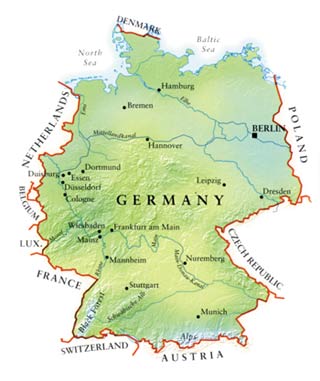
Geological research has shown that throughout the Jurassic Period (206 to 144 million years ago) much of Western Europe was covered by warm, shallow seas. A large number of fossils belonging to marine creatures have been obtained from these regions.
In particular, some fossil beds in Germany have enabled us to obtain very detailed information about life forms during the Devonian and Jurassic periods. The most important of these fossil fields are the Messel, Solnhofen and Holzmaden formations and the Hunsrückschiefer fauna.
The Hunsrückschiefer fauna contains a large number of fossils from a wide range of species from the Paleozoic Period (543 to 251 million years ago). Most fossils obtained from the region belong to the Lower and Middle Devonian periods. One significant characteristic of the Hunsrückschiefer fauna is that, just as in Burgess Shale, some life forms have been fossilized together with their soft tissues, enabling us to acquire information not just about the physical structures of life forms that existed hundreds of millions of years ago, but also about their life styles and behavior.

a) Solnhofen, one of the major fossil areas in Germany is a place where vast numbers of fossils are unearthed.
b) Fossil researches made in Messel
These remains show that living things have possessed complex systems in every period in which they have existed, and have enjoyed highly developed anatomies. Confronted by this state of affairs, Darwinists—who maintain that living things evolved gradually from the supposedly primitive to the more complex—are put in a hopeless position, because without exception, all the fossil records refute the theory of evolution, while once again verifying the fact of creation.
Fossils obtained from the Holzmaden Formation generally belong to creatures that lived in deep waters. The majority of these were fossilized perfectly, together with all their organs and skeletal structures. Rarely encountered soft-tissue fossils have also been obtained from Holzmaden. The Solnhofen fossils generally belong to life forms that lived in shallow gulfs and coral and sponge reefs. Fossils of terrestrial life forms such as insects, plants, lizards, crocodiles and birds have also been unearthed from Solnhofen, among them seven different fossils of Archaeopteryx, one of the oldest species of bird.
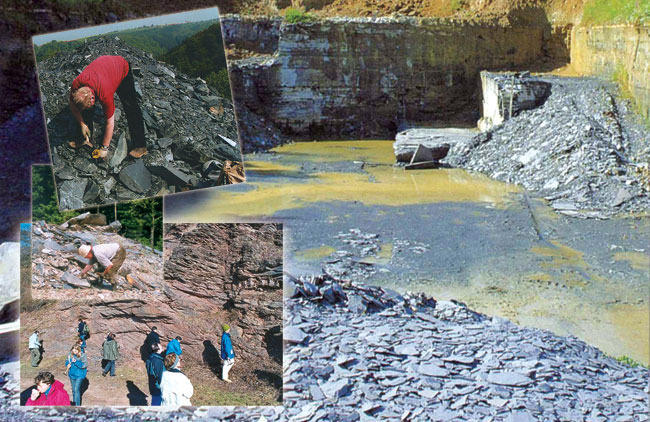
Researches in Hunsrückschiefer and Schieferhalde (small pictures)
The Holzmaden fossil area, close to Stuttgart is a major fossil area where species from the early Jurassic Period are found.
Another major fossil bed in Germany is the Messel Formation. In very early times, a lake some 700 meters (2296 feet) wide and approximately 1000 meters (3280 feet) deep, this contains a large number of fossils dating back to the Eocene Period (54 to 37 million years ago). Messel is known to have had a tropical climate during that period, and contains fossils of many different life forms, such as plants, birds, bats, reptiles, fish, tortoises and insects.
 |
Shrimp Age: 145 million years old The shrimp is an arthropod belonging to the sub-phylum Crustacea. Its body is covered in armor composed largely of calcium carbonate. Various species of shrimp live in both salt and fresh water. The earliest known shrimp fossil dates back some 200 million years. |
 |
Brittlestar Age: 390 million years old There is no differences between brittlestar of 390 million years ago and those living in the seas today. Despite the intervening millions of years, starfish have remained unchanged and never evolved in any period in the past. |
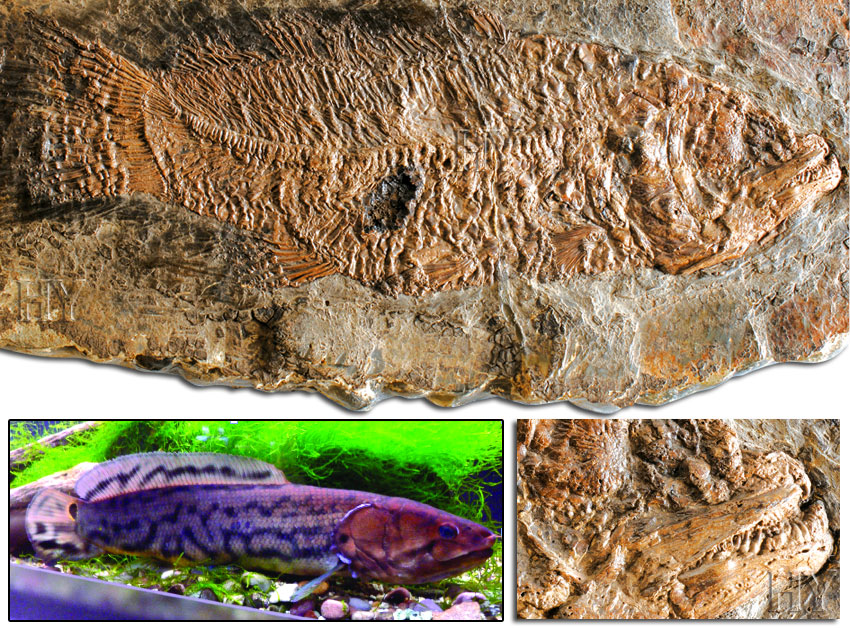 |
Bowfin Age: 50 million years old Bowfins belong to the the Amiidae family. As with many other fish species, they possess a rich fossil history. One of the earliest known fossil specimens is around 150 million years old. |
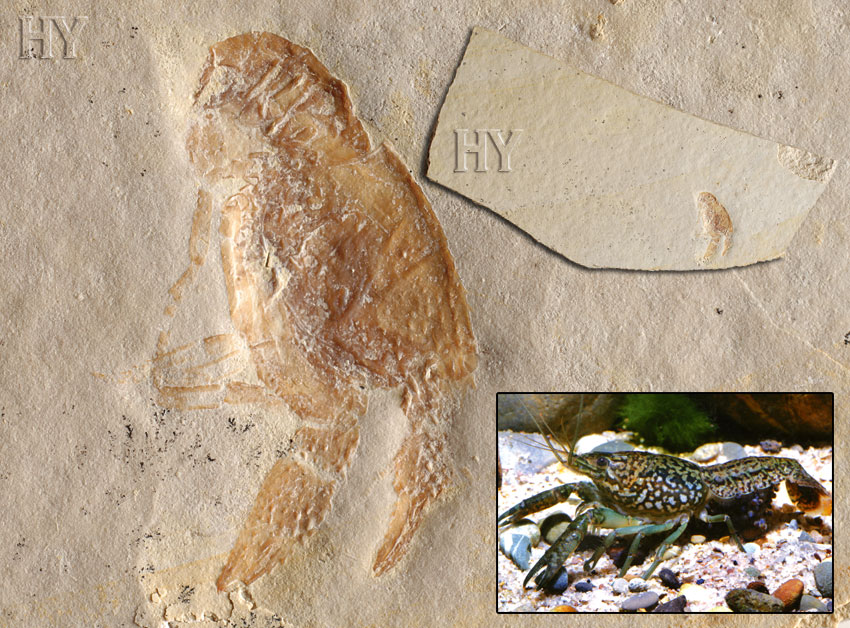 |
Crayfish Age: 150 million years Crayfish that existed 150 million years ago were no different from those living today. This sameness is one most significant piece of evidence that there has been no evolution. Crayfish always existed as crayfish. Like all living things, they were created by God. |
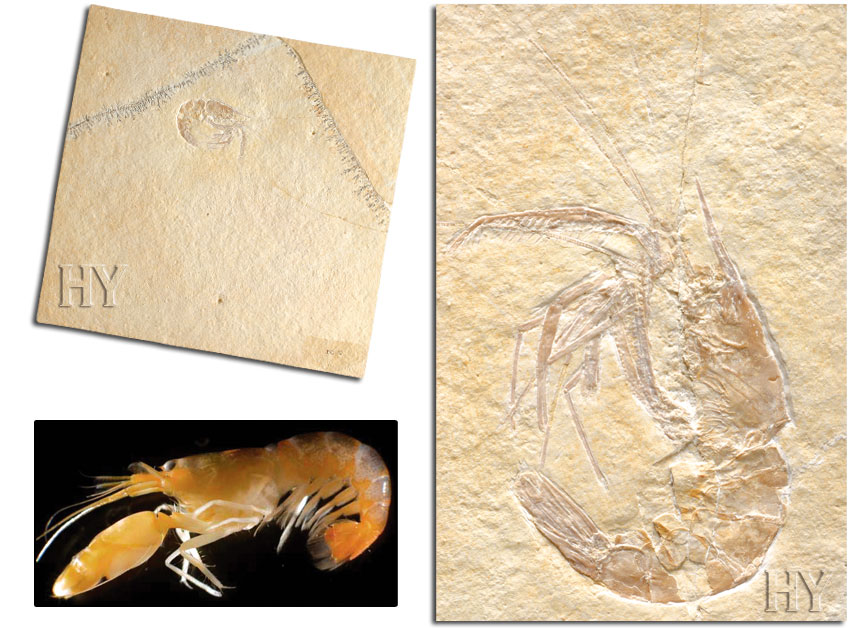 |
Shrimp Age: 155 million years old After decades of research, Darwinists have been unable to find a single fossil showing that evolution took place, though millions of fossil specimens show that it never did so. Every fossil obtained shows that there has been no change in living things' structures over the course of their existence, and that despite the passage of hundreds of millions of years, they remain exactly the same. |
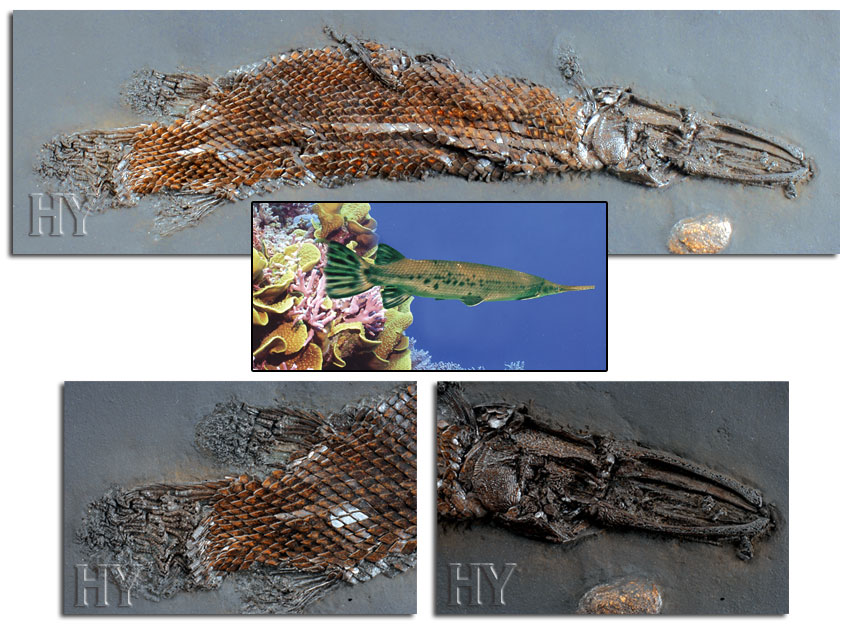 |
Garfish Age: 54 to 37 million years old Garfish, which first appeared in the fossil record around 180 million years ago, are examples of living fossils. The fossil garfish shown in the picture is 54-37 million years old. Garfish, which have been the same for tens of millions of years, refute evolution. |
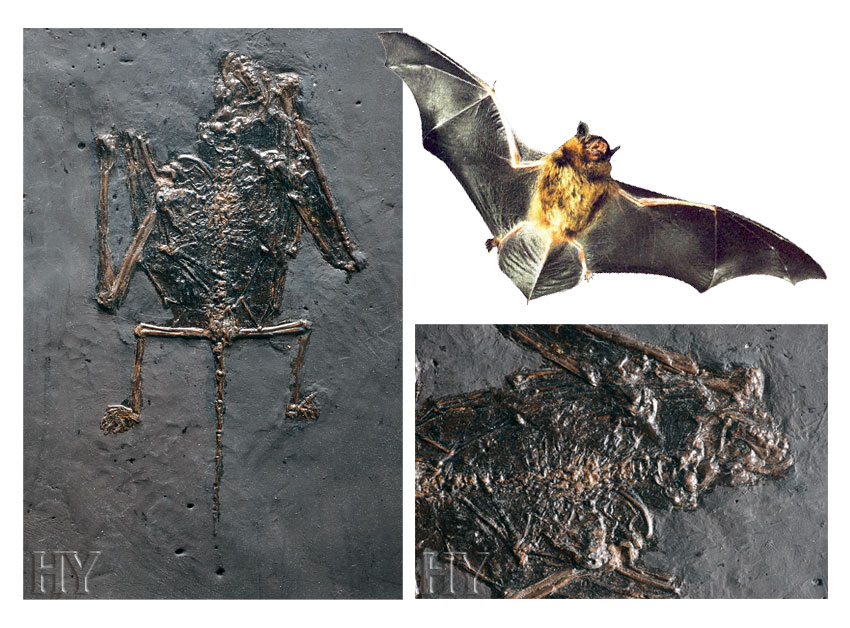 |
Bat Age: 54 to 37 million years old Fossil bats millions of years old refute the claim that living things underwent evolution. Fossils like this reveal that God created living things. |
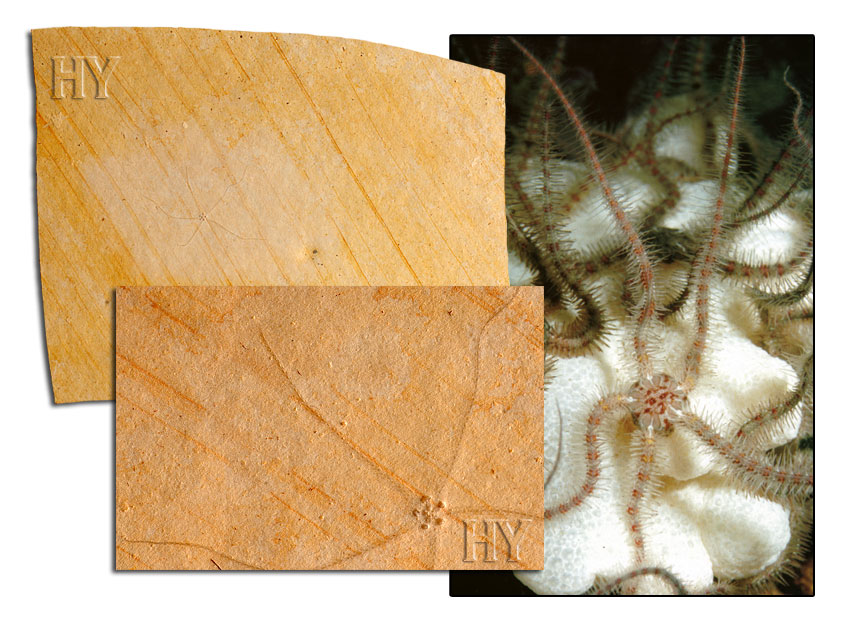 |
Brittlestar Age: 150 million years The fossil in the picture is 150 million years old and is evidence that brittlestars never evolved. In the face of this fossil, which is identical to specimens living today, evolutionists are unable to provide any rational and scientific explanation. |
 |
Coelacanth Age: 145 million years old Evolutionists long portrayed the coelacanth as an extinct intermediate form—a half-fish, half-reptile. But the fact that some 200 living specimens have been caught to date reveals that the claims made about this creature are nothing more than a deception. The coelacanth is no intermediate form, but a fish with complete and flawless system that lives in deep waters. Coelacanths, whose earliest known examples go back some 410 million years, have survived unchanged for nearly half a billion years. |
 |
Crayfish Age: 208 to 146 million years old The crayfish has eyes consisting of regular, square surfaces. These regular squares are in fact the front surfaces of square prisms. The inner surface of each of these prisms in the crayfish eye has a mirrored surface that reflects light strongly. The light reflected from this surface is precisely focussed onto the retina located further back. All these prisms have been installed at such an angle that they reflect the light perfectly onto a single point. |
 |
Brittlestar Age: 150 million years old The brittlestar is a living fossil that definitively refutes evolution. Brittlestars that lived 300 million years ago are exactly the same as specimens 245 million years old and 150 million years old—and as specimens alive today. Brittlestars that have remained unchanged for hundreds of millions of years, tell us that evolution is a lie. |
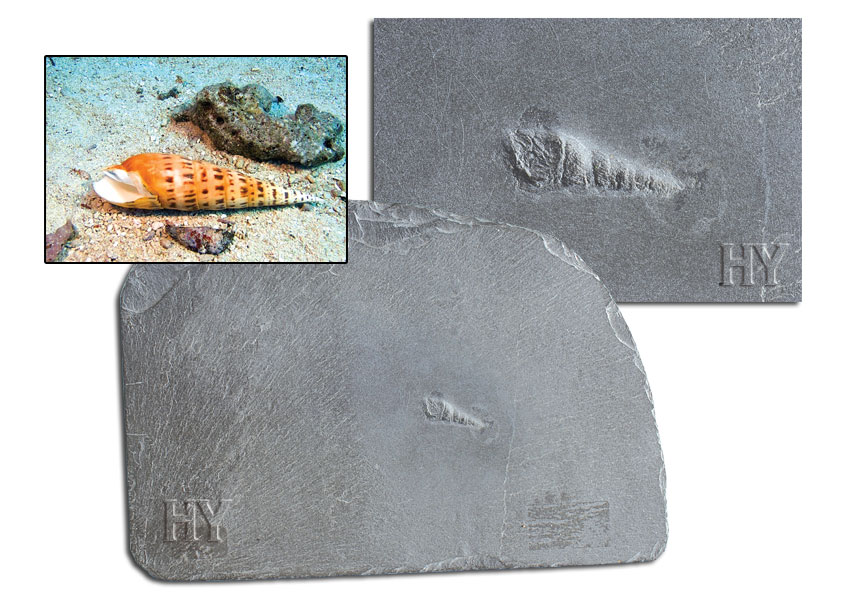 |
Gastropod Age: 410 to 360 million years old Gastropods are part of the phylum Mollusca. The oldest known specimens come from the late Cambrian Period. The specimen pictured is between 410 and 360 million years old. Gastropods that are millions of years old definitively refute evolution. |
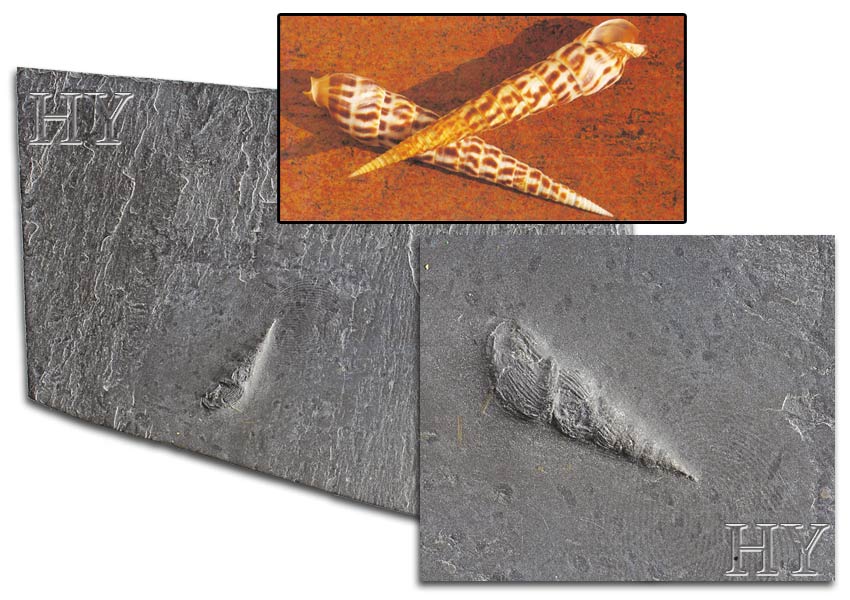 |
Gastropod Age: 410 to 360 million years old Gastropods that lived 410-360 million years ago are identical to today's specimens. These creatures that have remained unchanged despite the intervening millions of years are important evidence that living things never underwent any evolutionary process. |
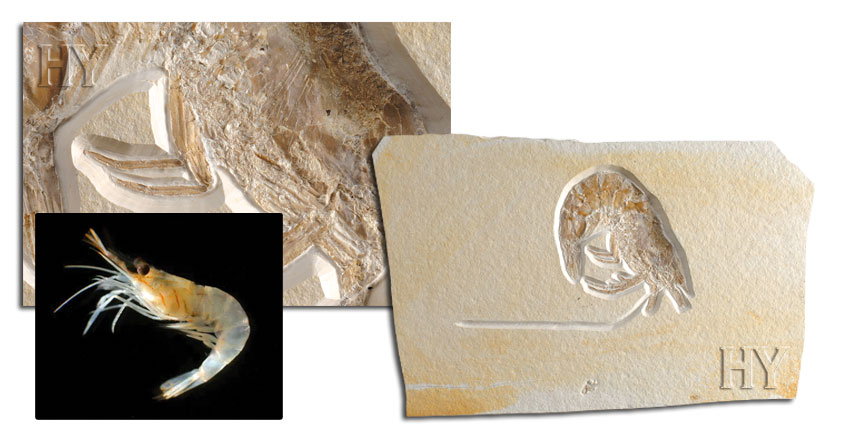 |
Shrimp Age: 208 to 146 million years old Shrimp, having survived unchanged for millions of years, show us that they did not evolve but were created. If a living thing has the same features now as it did millions of years ago, then this creature cannot have developed by way of evolution. The fossil record is proof that evolutionists' claims are untrue. |

Much of Spain consists of mountainous and hilly regions, such as the Pyrenees and the Sierra Nevada. Twenty-four percent of the country is above 1000 meters (3280 feet) . The mountainous areas contain some important fossil beds.
The rocky structure is divided into two. The north and west of the Iberian Peninsula is mainly made up of crystalline rocks such as granite and schist. The other part is made up of sedimentary rocks with high levels of limestone.
Among the fossils obtained from Spain are brachiopods and various marine creatures from the Devonian Period (417 to 354 million years ago), a wide variety of plant and animal species from the Carboniferous Period (354 to 290 million years ago) and many fossils of mammal, reptile, marine, bird and plant species from the Cenozoic Period (65 million years to the present day).
All these fossils place Darwinism in a major predicament. These discoveries offer no evidence in support of the claim of gradual evolution, but reveal millions of specimens that show that living things were created immediately and underwent no change during long geological periods. The significance of this is obvious: Living things did not evolve. Almighty God created them all.

The Ordesa Canyon, made up of limestone rocks extending down about 600 meters (1968 feet).
Bardenas Reales, Spain (small picture)

Much of the geographical structure of the Czech Republic consists of a mountainous area in the region of Bohemia. This area, some 900 meters (2953 feet) above sea level, is rich in fossils.
In addition to fossil micro-organisms dating back to the Proterozoic Period (2.5 billion to 545 million years ago), many fossil from the Cambrian (543 to 490 million years) and Devonian periods (417 to 354 million years ago) have also been discovered. Among the most striking of these are 1,300 different trilobite species. These are known as Barrende trilobites because some 300 of them were named by the French paleontologist Joachim Barrende. One of the areas in which Barrende trilobites are most frequently encountered is the Jince Formation. Fossil specimens of many marine creatures from the Paleozoic Period (543 to 251million years ago) have also been unearthed from Jince, which is known to have had a cold climate during the Cambrian Period.
The rich fossil sources in the Czech Republic are important to our understanding of natural history, since these findings show that no evolutionary process of the kind claimed by Darwinists ever took place. Living things did not descend from a supposed common ancestor, as Darwinists maintain, and every species appears suddenly in the fossil record, with its own unique characteristics. This fact, important evidence of creation, has dealt a severe blow to Darwinism.
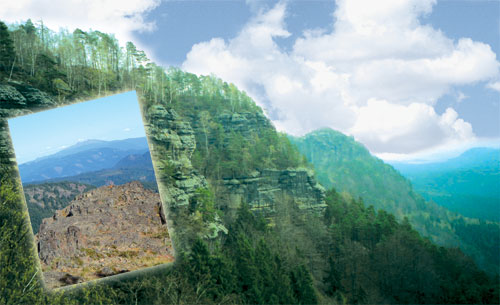
Fossils millions of years old are gathered from Bohemia, famous for its rich fossil beds. Each one of these fossil specimens reveals that these living beings did not evolve, but were created by God.
 |
Fern Age: 360 to 286 million years old Ferns that lived 360 to 286 million years ago are identical to specimens of today. These plants have remained the same for hundreds of millions of years, revealing the indisputable fact of God's creation. |
 |
Frog Age: 12 million years old One of the proofs that frogs have always been frogs is the 12-million-year-old fossil pictured. There is no difference between the frogs of 12 million years ago and those alive today. |


Marble deposits are generally found under oceans or floors of mountain ranges once populated with coral reefs. Pictured is a marble deposit in the Italian Alps.
Much of Italy's rock structure consists of what was once the floor of the Tethys Sea, known to have covered certain parts of early Europe. Geological research has shown that the Tethys Sea emerged with the splitting up of Pangaea, the sole continent on Earth around 165 million years ago. The Tethys Sea, which covered a very large area, had tropical characteristics since it was very close to the Equator. The Mediterranean Sea emerged some 65 million years ago from within the Tethys Sea. As land areas rose, it was gradually pushed northwards as a result of tectonic movements over geological periods lasting millions of years.
The Italian rock beds, once the floor of the Tethys Sea, contain a large number of marine fossils, showing that all the known species of marine life forms emerged suddenly with their complex structures—in other words, they were created out of nothing. There are no fossils to indicate that these life forms derived from any supposed common ancestor or are descended from one another. Darwinism has been defeated in the face of the fossil record, a defeat that has been brought out into the light by hundreds of millions of fossil specimens.
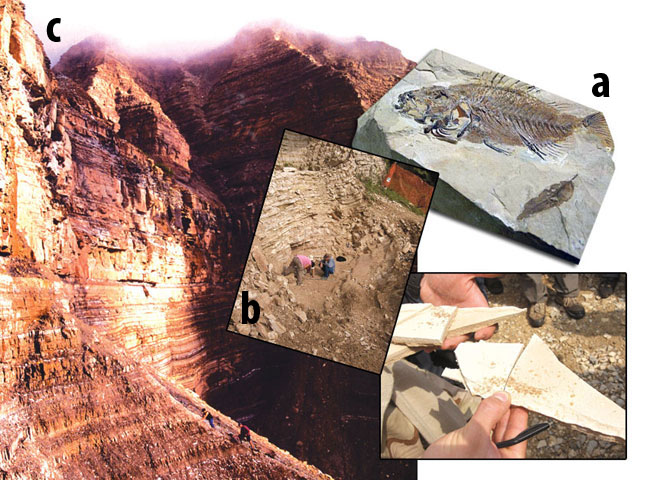
a) A fish fossil found in Italy's Monte Bolca fossil area. b) Fossil researches made in Monte Bolca. c) The Butterloch Canyon in Italy has a rock structure dating back to the Permian Period (290 to 248 million years ago).
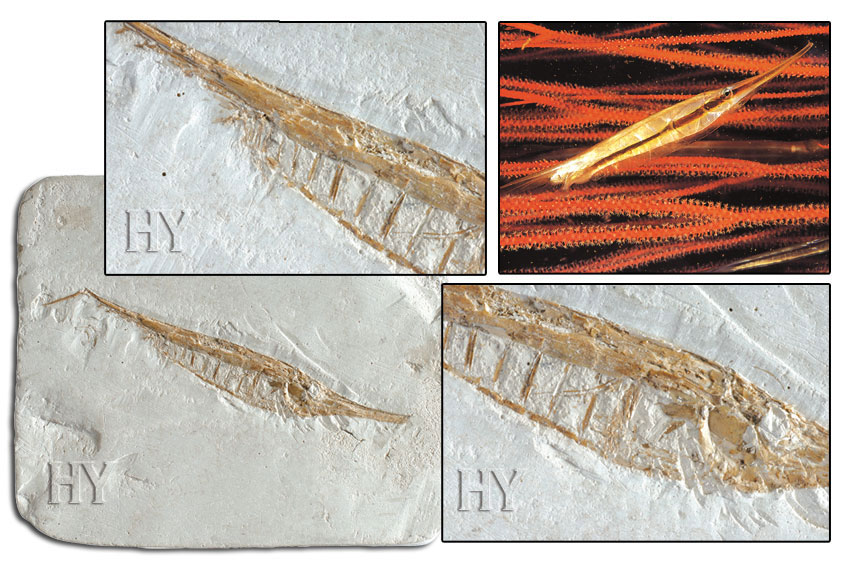 |
Razorfish Age: 6 million years old Razorfish’s (family: Centriscidae) bodies are encased in shields and have spiny dorsal fins. The razorfish pictured is 6 million years old and possesses exactly the same characteristics as razorfish living today. This shows that razorfish have remained unchanged for millions of years and have never gone through any intermediate stages. |
 |
Seahorse Age: 26 million years old With structures that have remained unchanged for millions of years, seahorses, which belong to the family Syngnathidae, are one of the many species that challenge the theory of evolution. The fossil seahorse pictured is 26 million years old, and identical to seahorses living today. |
 |
Yellowtail Age: 48 million years old One of the fossil fish species discovered in Italy is the yellowtail. The fossil pictured is 48 million years old. That yellowtails of 48 million years ago were the same as those living today shows that the theory of evolution is untrue. |
 |
Dragonfly Larva Age: 10 million years old Like their fossilized adults, the fossils of dragonfly larvae show that evolution never happened. There is no difference between the 10-million-year-old dragonfly larva pictured and today's larvae. This reveals that the theory of evolution is a myth. |
 |
Pipefish Age: 23 to 5 million years old Pipefish, members of the same suborder as the seahorse, have a long, thin body structure—and also one of the living fossils that invalidate evolution. The fossil pipefish pictured is 23 to 5 million years old and identical to present-day specimens. |
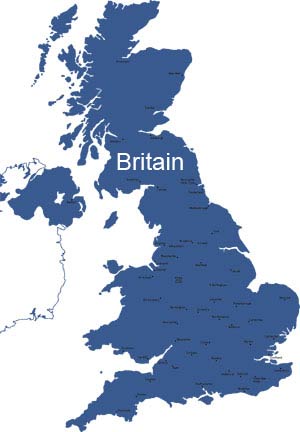
The oldest known fossil specimens discovered in Britain date back to the Silurian and Devonian periods (443 to 417 million and 417 to 354 million years ago). Fossils of different species can be found in Britain, whose geological history goes back further than 600 million years, since in the past, it has experienced both a tropical climate and an ice age, changes in sea levels, volcanic eruptions and erosion. The great majority of the fields from which large numbers of fossils have been obtained lie in the south of the country. One such region is Dorset, which possesses various fossil fields.
The rock structure in the region exhibits differing characteristics. But Dorset is particularly famous for its coastal strip, known as the "Jurassic Coast" and consisting of rocks from the Jurassic Period and a number of different fossil fields. Well preserved and fully detailed fossils belonging to hundreds of species have been obtained from these fields. Every one of the fossils reveals that living things have remained unchanged over millions of years, and never underwent evolution.
Another region of Britain with important fossil fields is Lancashire. The oldest of the region's fields date back to the Carboniferous Period (354 to 290 million years ago). Some 340 million years ago, the region was the floor of a warm and not particularly deep sea. For that reason, a large number of marine fossils from the period have been discovered.
The fossils of many species discovered in Britain again emphasize that living things are not descended from an alleged common forebear; and that the theory of evolution, which maintains that they developed gradually, is invalid. Like all other fossils, these fossils reveal that living things did not undergo evolution, but were created.
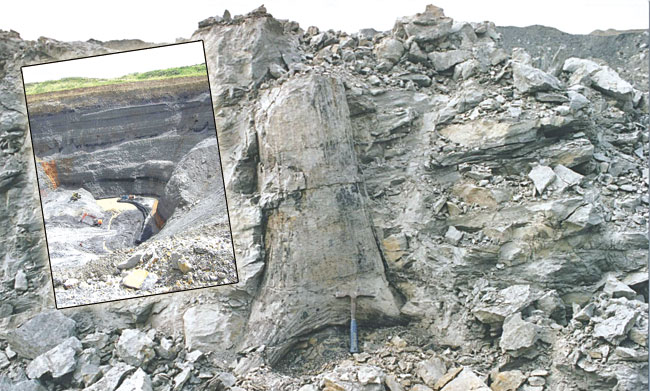
The quarry in Crock Hey is a famous fossil area in England. All the fossils uncovered in this region reveal that evolution never took place.

Researches made on Ammonite fossils gathered from the Jurassic shore in Dorset. (small picture on the left)
The shore in Dorset is made up of rocks from the Jurassic Period. Many fossils were gathered from these rocks.
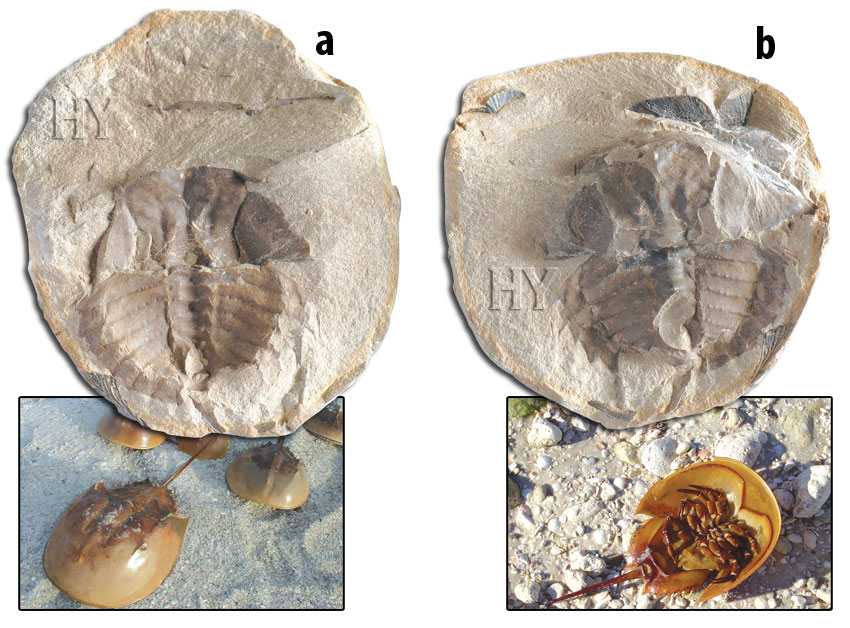 |
Horseshoe Crab Age: 300 million years old Xiphosura (horseshoe crabs) have existed ever since the Cambrian Period. The specimen pictured is 300 million years old. Horseshoe crabs, having remained the same for 300 million years, demolish evolutionist claims of gradual evolution. |
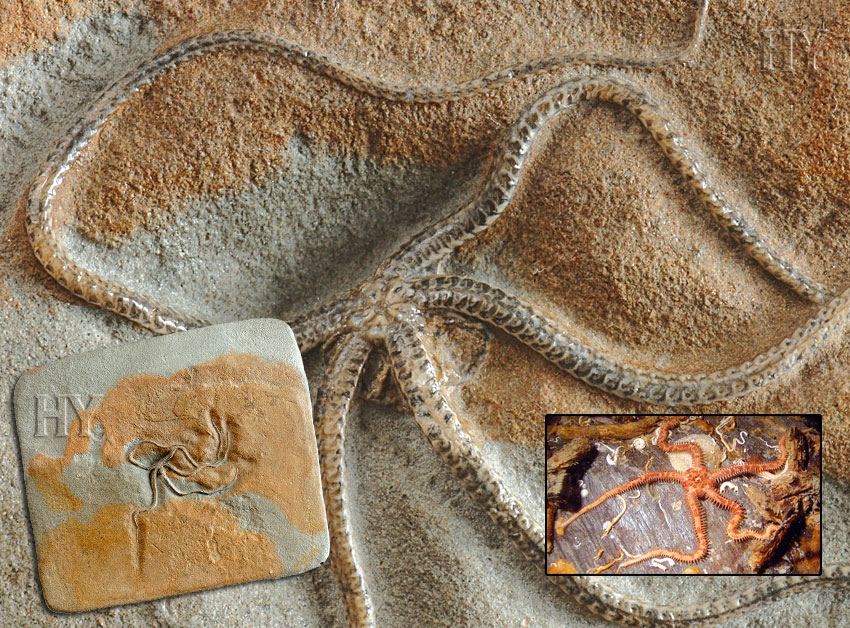 |
Brittlestar Age: 180 million years old This 180-million-year-old fossil reveals that brittlestars have been the same for 200 million years. These animals, no different to those living today, once again reveal the invalidity of evolution. |
 |
Nautilus Age: 167 million years old The nautilus is one of the many life forms that has undergone no change since it was first created. The 167-million-year-old fossil juvenile pictured is one of the proofs that these creatures have been the same for millions of years. |
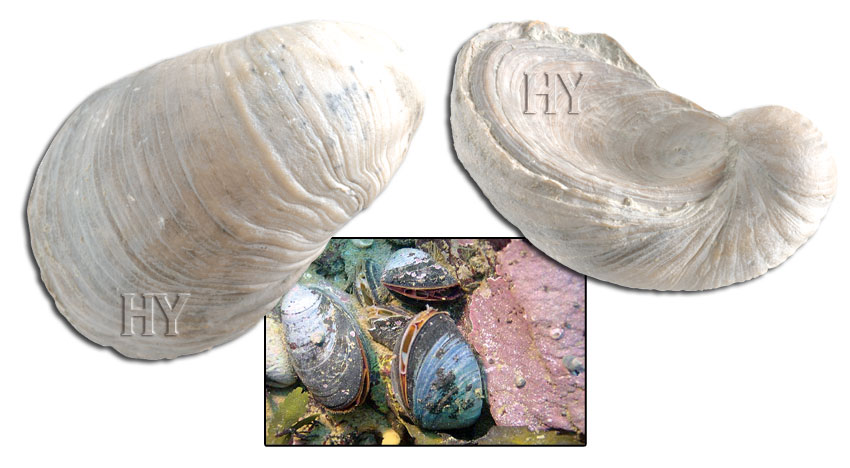 |
Bivalve Age: 200 million years old Today's twin-shelled bivalves are identical to those that lived 200 million years ago. Like all other living things, bivalves have retained the same features and have remained unchanged ever since the day of their creation. |
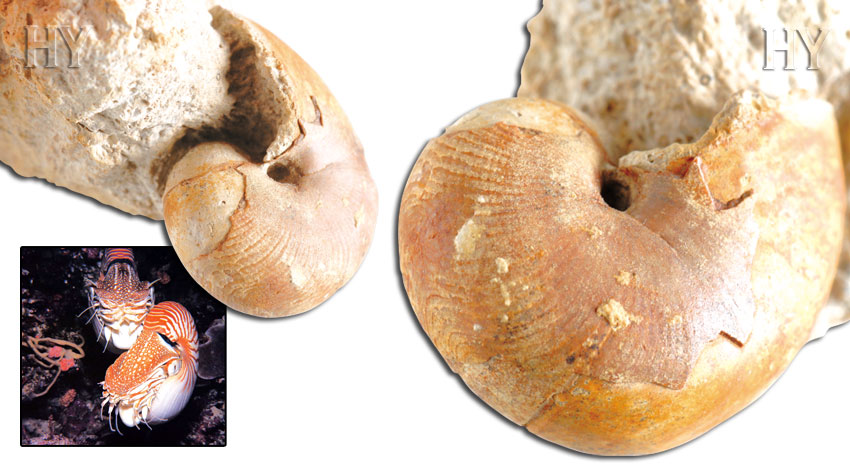 |
Nautilus Age: 167 million years old Present-day nautili have exactly the same characteristics as those that lived millions of years ago. The fossil record shows that they have not changed down the ages—in other words, they never underwent evolution. One of the specimens showing this fact is the 167-million-year-old fossil nautilus pictured. |
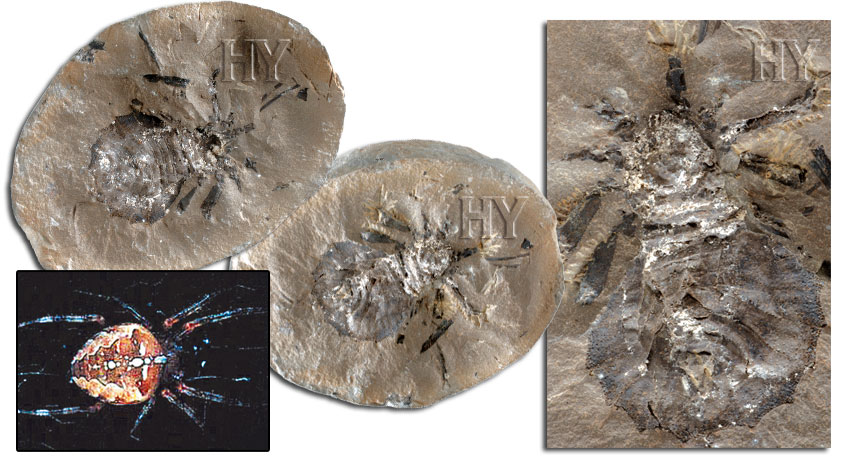 |
Spider Age: 300 million years old Spiders, having remained the same for 300 million years, are another life form that deal a lethal blow to the theory of evolution. Demolishing all evolutionist claims, spiders have had exactly the same characteristics for hundreds of millions of years and have never undergone any changes. |
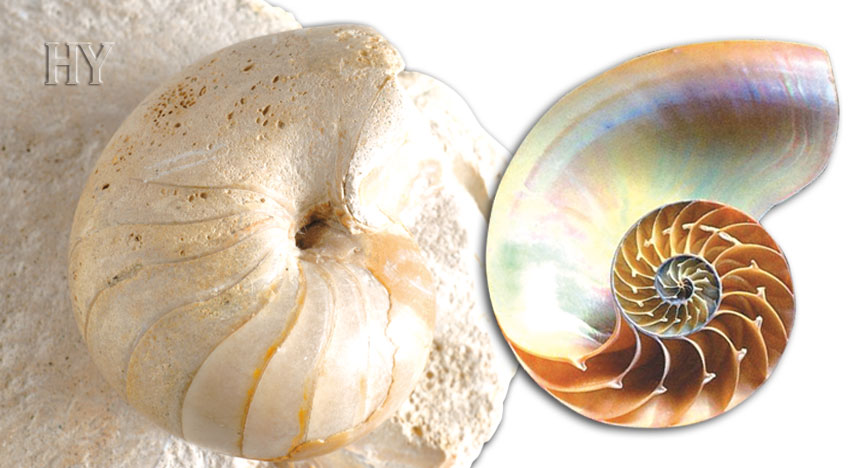 |
Nautilus Age: 167 million years old There is no difference between nautili alive today and those that lived millions of years ago. This lack of any difference is important evidence that evolution never happened. |
 |
Capros Age: 35 million years The fact that a Capros living 35 millions years ago is identical to specimens alive today is one of the most significant proofs that evolution is a terrible falsehood. Not a single fossil representing evidence for evolution has ever been found during 150 years of paleontological excavations. All the fossils unearthed show that living things never evolved. |
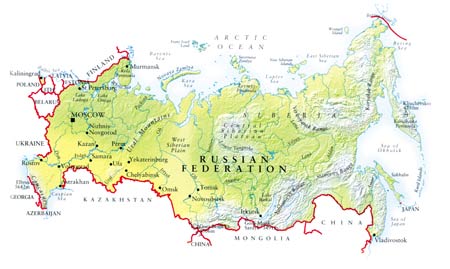
In addition to frozen animals obtained from Siberia, a large number of fossils preserved in amber has also been discovered in Russia. These come from what's known as Baltic amber, found in a wide area from Berlin in the west to the Ural mountains in the East. The great majority of Baltic amber dates from the Eocene Period (54 to 37 million years ago).
A large part of this amber lies in the Samland region, currently within the borders of Russia, and is found at an average depth of 25 meters (82 feet) to 40 meters (131 feet) beneath the surface. The stratum containing the amber is known as "blue earth." Each 1000 kilograms (2204 pounds) of soil contains approximately 1 kilogram (2.2 pound)of amber, and only one part in every few hundred contains an inclusion.
The color of the amber, its formation and certain other physical characteristics vary, according to the period when it was formed and the type of tree it came from. The oldest known amber specimens date from the Carboniferous Period (354 to 290 million years ago). Amber from this period is most frequently found in the U.S. and Great Britain.
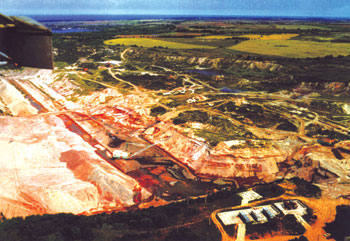
One of the areas in Russia richly populated with fossil ambers.
In order for inclusions to appear inside amber, two very important and consecutive processes take place once the living thing has been trapped in the resin. The first is hardening, due to cold or dryness. The second is the decay of the tissues of the creature trapped inside the resin. Fluids released during the course of this decay process assume a special structure by mixing with the resin fluid. The creature's body is preserved inside a bubbly structure just like a balloon. In order for resin to transform into amber, it must go through a great many chemical and geological stages.
For scientists, inclusions in amber represent a major sphere of activity. Specimens of many living things get trapped at the moment of carrying food back to the nest, in a state of defense, trying to camouflage themselves, attempting to protect their young or releasing chemical substances to neutralize aggressors. And all these specimens represent proof that the characteristics possessed by living things have remained unchanged over millions of years—in other words, that no such process as evolution ever took place.

One of the countries in which Baltic amber is found is Poland. Fossils inside the amber obtained from the Baltic region, one of the richest sources of amber, are on average 50 to 45 million years old. One major feature that distinguishes Baltic amber from other ambers is the type of acid it contains. Known as succinic acid, it is found in the resin of a tree species estimated to have lived in the region during the Eocene Period (54 to 37 million years ago).
The vast majority of animals in Baltic amber are arthropods. Fossil specimens of worms, molluscs and various vertebrate organisms are rarely encountered. These preserved fossils show that flies have always been flies, butterflies have always been butterflies and caterpillars have always been caterpillars—in other words, that living things have remained unchanged over the course of history. In that respect, they represent a major dilemma for the theory of evolution. These living things, sometimes fossilized with their prey or their larvae, or sometimes as having emerged from the larval stage, tell us that they have undergone the same life stages for tens of millions of years, and have never undergone any process of evolution.
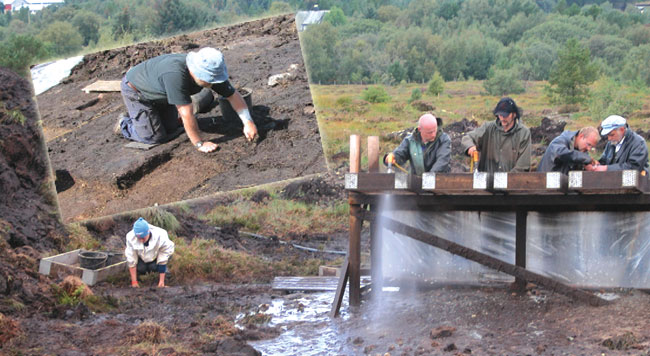
Baltic ambers are gathered from quite a wide area. One of the researches made in this area.
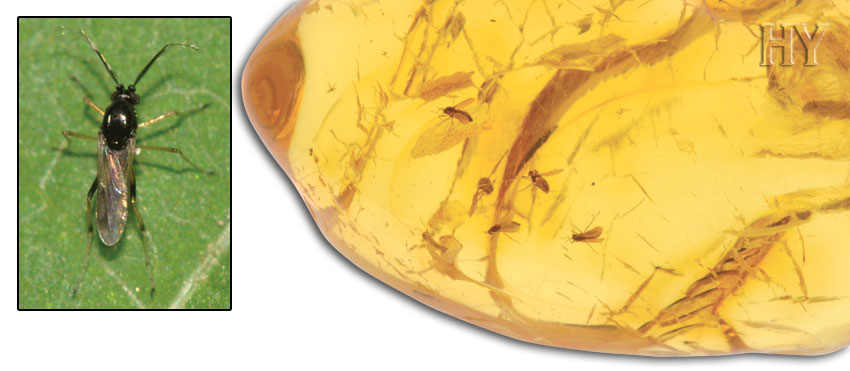 |
Biting Midge Swarm Age: 45 million years old The fossil record proves that living things are not descended from other species and did not evolve gradually. 45-million-year-old female midges, identical to those living today, reveal this once again. |
 |
Phasmid Nymph (Walking Stick) Age: 45 million years old Masters of camouflage, walking stick insects resemble tree twigs or leaves. It is next to impossible to tell them apart from the branch they are resting on. Walking sticks that lived 45 million years ago and those living today protect themselves from predators using exactly the same tactics and camouflage themselves in the same way. The structures of these insects have not changed for 45 million years—evidence that evolution never took place. |
 |
Worker Ant with Aphid Larva Age: 45 million years old "Ant" is the general name given to some 8,000 species of insects that live social lives, live in colonies, and build their nests under ground. Each species of ant has its own particular characteristics. Inside this amber, a semi-adult leaf aphid has been fossilized alongside the worker ant. Aphids generally live cooperative lives with ants, because some ants feed the aphids. |
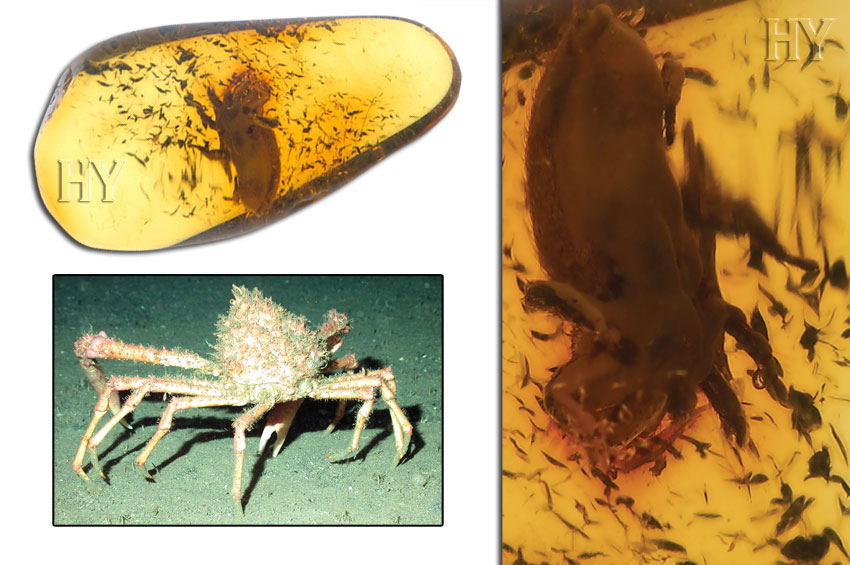 |
Crab Spider Age: 45 million years old Spiders, of which this specimen resembles a crab, have some 2,000 different species. The crab spider in this amber is 45 million years old and identical to contemporary crab spiders. |
 |
Aphid Larva Age: 45 million years old Aphids belonging to the family Pemphigidae are wingless. Their primary host plants are trees, and sometimes herbaceous plants. The aphid larva pictured is 45 million years old. Aphids and their larvae have remained the same for all that time, demolishing all the claims of the theory of evolution. |
 |
Midge Age: 45 million years old Darwinists—in a helpless position when it comes to the origin of insects, as they are with regard to so many other subjects— cannot offer any scientific explanation when confronted by fossils in amber. These life forms are manifest proofs that evolution never took place. |
 |
Long-Legged Age: 45 million years old This fly, a member of the order Diptera, has preserved all the same characteristics for millions of years, never undergoing any change. Any species that has remained the same over 45 million years invalidates evolution. |
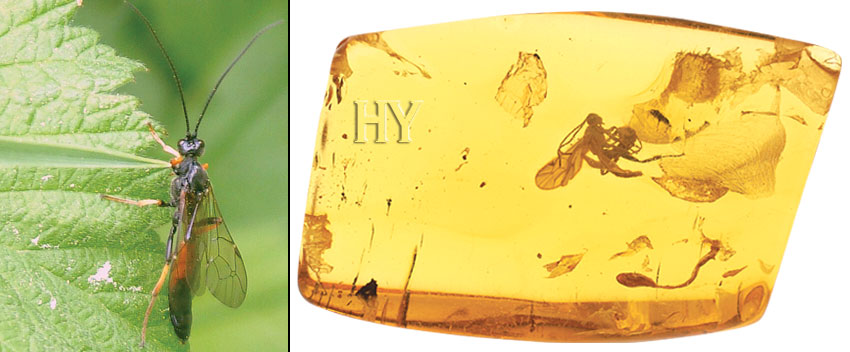 |
Wasp Age: 50 million years old Pictured is a 50-million-year-old wasp preserved in Baltic amber. Like all other living things, wasps, which have remained the same for 50 million years, show that evolution never happened, and that God created them. |
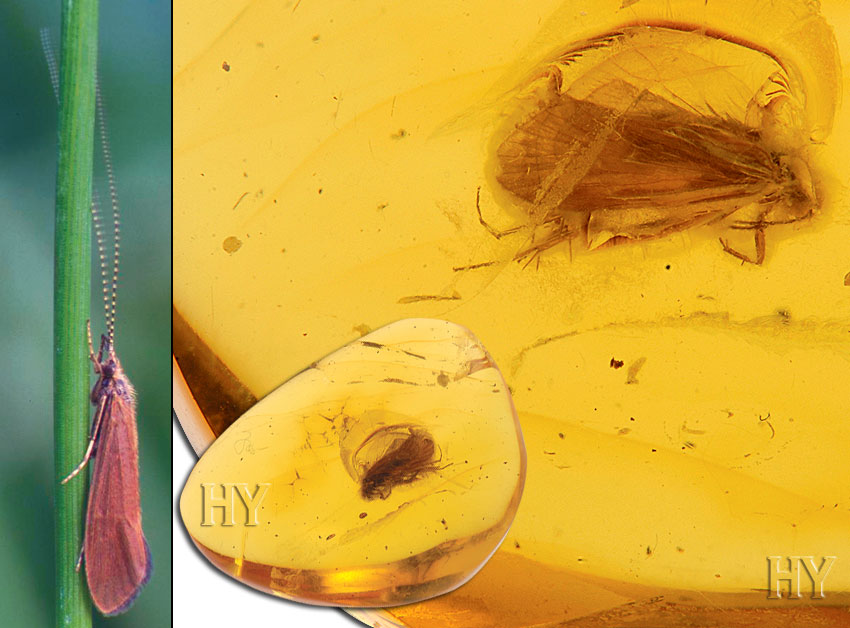 |
Caddisfly Age: 50 million years old The larvae of the caddisfly are used as fishing bait. Caddisflies have preserved the same structures and characteristics for millions of years, never undergoing any changes. This 50-million-year-old fossil caddis fly is also proof that these living things have never altered. |
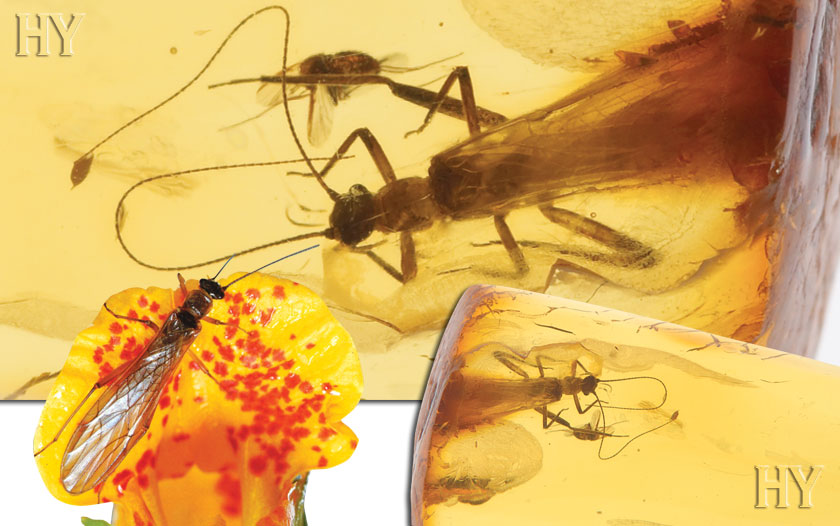 |
Stone Fly Age: 50 million years old Stone flies range between 5 and 10 millimeters (0.1 and 0.3 in) in length and have two long antennae; their larvae are used as fishing bait. They too have remained unchanged for millions of years. This 50-million-year-old fossil stone fly pictured is identical to stone flies living today. |
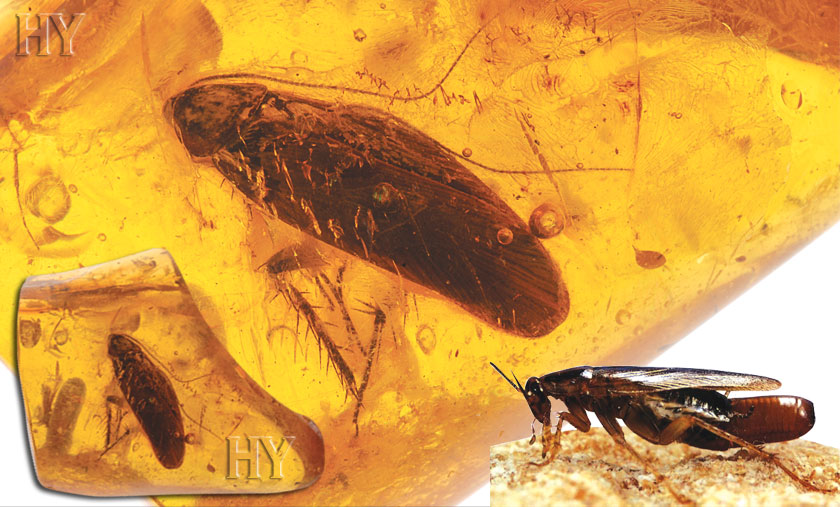 |
Cockroach Age: 50 million years old The cockroach, the earliest known winged insect, emerges in the fossil record in the Carboniferous Period, a full 350 million years ago. This insect—with its delicate antennae sensitive to the slightest movement, even an air current, its perfect wings, even its ability to withstand nuclear radiation—has remained exactly the same for hundreds of millions of years. This 50-million-year-old cockroach is no different from present-day specimens. |
 |
Moth Age: 50 million years old The moth is an insect species closely resembling a butterfly. Both butterflies and moths are members of the order Lepidoptera. The 50-million-year-old moth in the picture, no different to present-day specimens, again confirms that living things were never subjected to evolution. |
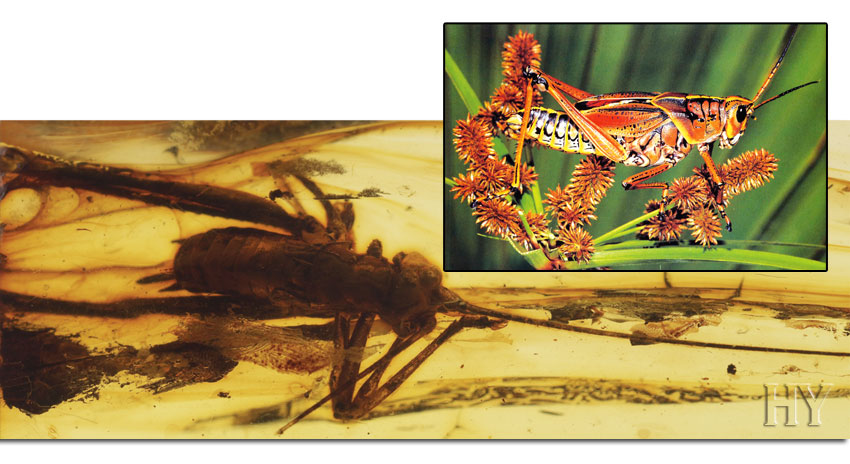 |
Grasshopper Age: 50 million years old The fossil record shows that, contrary to what evolutionists suppose, insects have no primitive forerunners. According to fossil discoveries, all insect species appeared suddenly, with all their particular characteristics, and have survived with those same characteristics ever since. One proof of this is this 50-million-year-old fossil grasshopper, which is no different from present-day grasshoppers. |
 |
Grasshopper Age: 50 million years old This grasshoppers, 50 million years old and preserved in amber, is identical to their present-day counterparts. These insects have been the same for millions of years; they did not evolve, but were created. |
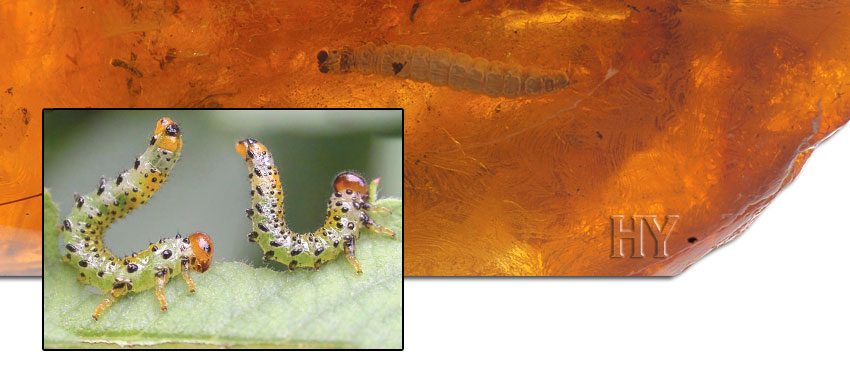 |
Caterpillar Age: 50 million years old One proof that caterpillars have always been caterpillars is this 50-million-year-old specimen preserved in amber. Caterpillars, which have maintained all the same features despite the intervening millions of years, show that evolution is a gross deception. |
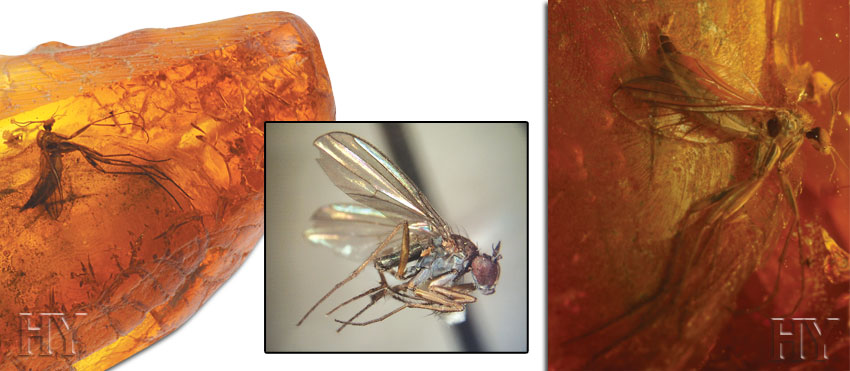 |
Fly Age: 50 million years old There is no difference between flies that lived 50 million years ago and flies living today. The fossil fly in amber pictured is one proof of this fact. |
 |
Fly Age: 50 million years old Flies emerge suddenly in the fossil record. One of their major characteristics is their extraordinary maneuvering ability. Human beings cannot raise and lower their arms 10 times a second, yet the average fly is able to beat its wings 500 times a second. In addition, both wings beat simultaneously. The slightest discrepancy between the vibration of the wings would make the fly lose its balance. Yet no such discrepancy ever arises. It is of course impossible to account for the instantaneous appearance of living things with such flawless structures in terms of evolution. This is one of the clear proofs of God's creation. |
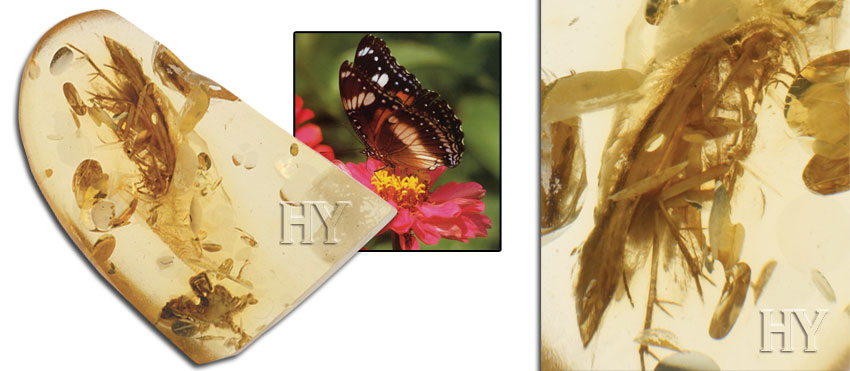 |
Butterfly Age: 50 million years old This 50-million-year-old butterfly fossil shows that these insects have remained the same despite the intervening tens of millions of years. |
 |
Leafhopper Age: 45 million years old Pictured is a 45-million-year-old leafhopper, no different from today's specimens. This complete similarity is an important indication that evolution is a fictitious process that never actually took place. |
 |
Moth Age: 45 million years old That today's moths are identical to ones that lived millions of years ago indicates that living things have never changed for so long as they have existed—and have never undergone evolution. The 45-million-year-old fossil moth pictured once again demonstrates this fact. |
 |
Scuttle Fly Age: 45 million years old This 45-million-year-old fossil fly reveals that the theory of evolution is an imaginary process that never took place. Living things are not descended from a supposed common forebear, as Darwin maintained, and have undergone no intermediate stages. |
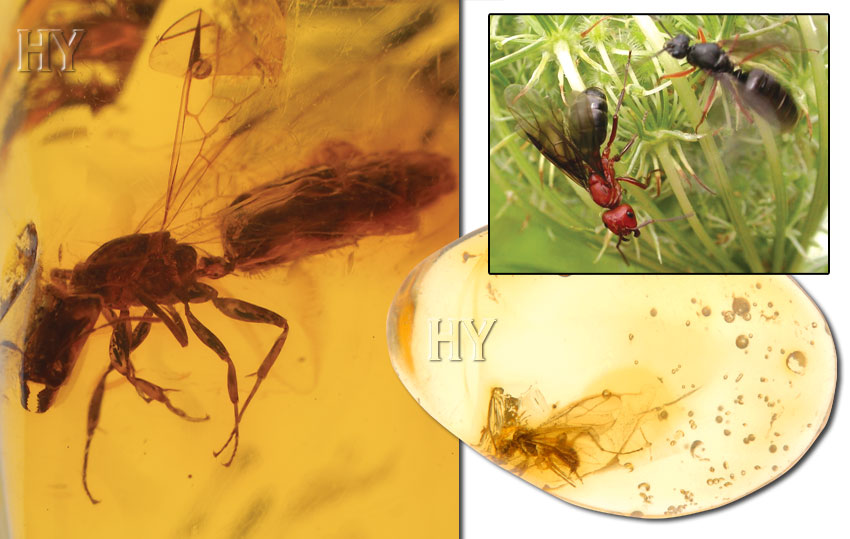 |
Winged Ant Age: 45 million years old The 45-million-year-old winged ant pictured is identical to present-day winged ants. |
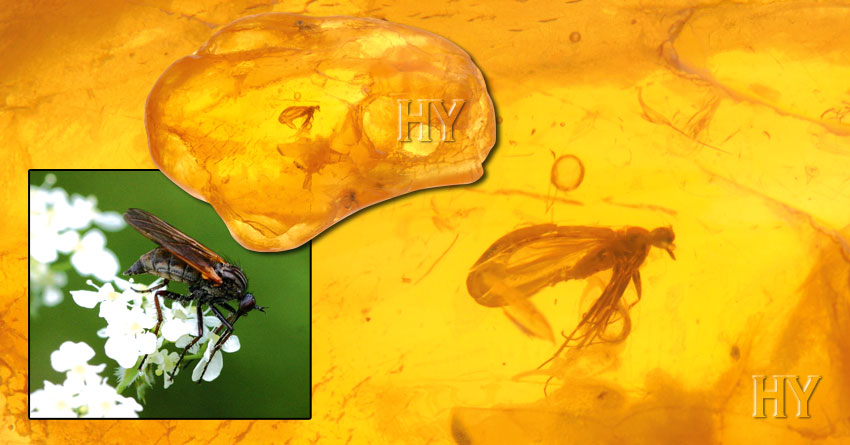 |
Dance Fly Age: 45 million years old One example of how living things have maintained the same characteristics for as long as they have existed and have never undergone evolution is this 45-million-year-old fossil fly, identical to today's dance flies. |